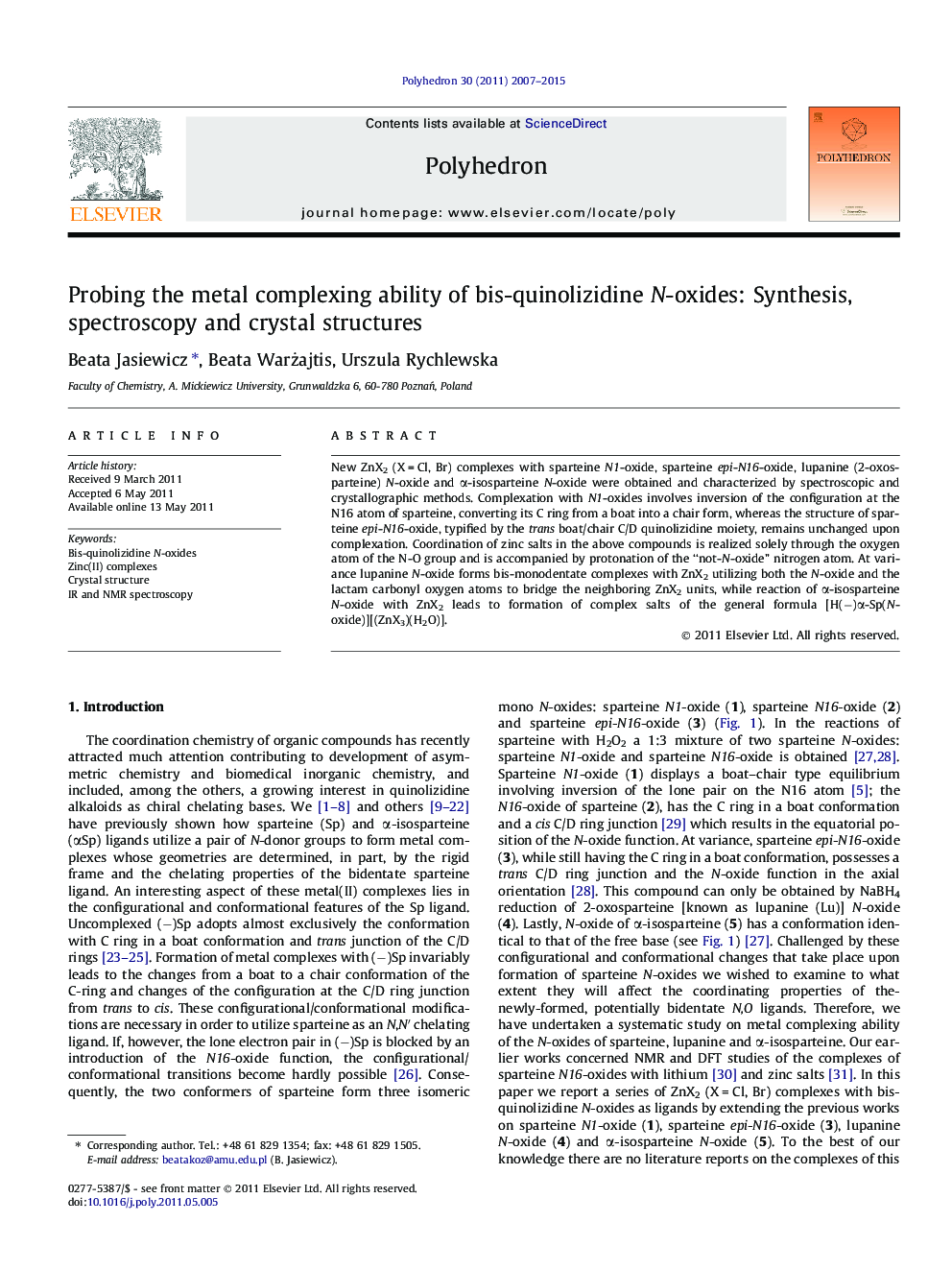| Article ID | Journal | Published Year | Pages | File Type |
|---|---|---|---|---|
| 1338553 | Polyhedron | 2015 | 9 Pages |
New ZnX2 (X = Cl, Br) complexes with sparteine N1-oxide, sparteine epi-N16-oxide, lupanine (2-oxosparteine) N-oxide and α-isosparteine N-oxide were obtained and characterized by spectroscopic and crystallographic methods. Complexation with N1-oxides involves inversion of the configuration at the N16 atom of sparteine, converting its C ring from a boat into a chair form, whereas the structure of sparteine epi-N16-oxide, typified by the trans boat/chair C/D quinolizidine moiety, remains unchanged upon complexation. Coordination of zinc salts in the above compounds is realized solely through the oxygen atom of the N-O group and is accompanied by protonation of the “not-N-oxide” nitrogen atom. At variance lupanine N-oxide forms bis-monodentate complexes with ZnX2 utilizing both the N-oxide and the lactam carbonyl oxygen atoms to bridge the neighboring ZnX2 units, while reaction of α-isosparteine N-oxide with ZnX2 leads to formation of complex salts of the general formula [H(−)α-Sp(N-oxide)][(ZnX3)(H2O)].
Graphical abstractUnlike bis-quinolizidine alkaloids, which in their metal complexes act as the chelating N,N′ ligands, bis-quinolizidine N-oxides coordinate to zinc(II) in a monodentate fashion and solely through the oxygen atoms. The O,O′ bis-monodentate coordination of the doubly oxygenated lupanine N16-oxide leads to the formation of a single stranded helix responsible for the conglomerate crystallization of Lu-N-oxide-ZnCl2.Figure optionsDownload full-size imageDownload as PowerPoint slideHighlights► Synthesis of ZnX2 (X = Cl, Br) complexes with bis-quinolizidine N-oxides. ► Monomolecular, polymeric and ionic Zn complexes. ► Monodentate coordination of sparteine and alpha-isosparteine N-oxides. ► Conglomerate crystallization.
